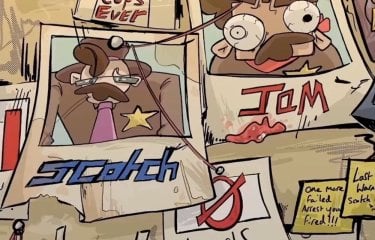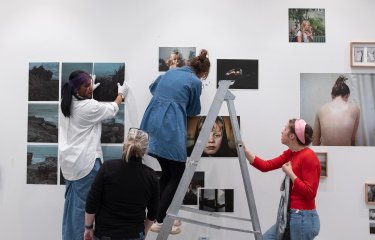Textiles lecturer Highly Commended at Wildlife Artist of the Year
12 January 2021

Associate Lecturer on Textile Design, Fiona Sperryn was awarded Highly Commended at the Wildlife Artist of the Year 2020 by the David Shepherd Wildlife Foundation. We spoke to Fiona her work, her inspirations and how it felt to receive the award.
Constantly inspired by her environment, immediate or global, Fiona aims to celebrate incredible endangered creatures and their habitat. Her Wildlife Artist of the Year entry, Orangutan, Adult, Pongo Pygmaeus, was no different. On being shortlisted and receiving Highly Commended, Fiona says "I had butterflies of excitement at the news and was thrilled to achieve recognition for a woven piece in this fine art competition!"
What was your inspiration behind the work and how was it created?
I started with photographs I had taken at an orangutan sanctuary in the steamy forests of Malaysian Borneo.
With a hands-on approach throughout the creative process, I translated my original drawings into hand-woven digital tapestry artwork on a jacquard loom in my studio in Cornwall. In a process akin to painting with yarn, each of the four shuttles I threw for this piece held uniquely textured, conscientiously selected natural fibres – linen, bamboo, merino wool and hemp. Off the loom, the piece was carefully cut and hand-finished to create the texture reminiscent of orangutan fur.
How important is the environment and sustainability in your practice?
I am very influenced and fascinated by my environment, from the immediate textures around me to the plight of endangered species across the globe. These details and interconnections form the core of my inspiration both visually and motivationally.
If I can draw attention to good causes such as the David Shepherd Wildlife Foundation through my work, it's great I can make a difference too.
How do you help students understand the environmental context and impact of their practice?
I lecture to students about my business in a professional context, trying to set a best practice example and also sharing my mistakes with them! In tutorials with individual students there is also the scope to go into detail relevant to their developing practice, be it discussion around sourcing yarn and materials or consideration of the impact of their production.
Why is it important for future textiles practitioners to understand this impact?
As textiles and fashion practitioners we have the opportunity, and responsibility, to influence design, craft and business in ethical and environmental terms. The decisions we make will have a lasting impact on the future of people, our environment and the planet.
See Fiona Sperryn's work over on David Shepherd Wildlife Foundation's website




